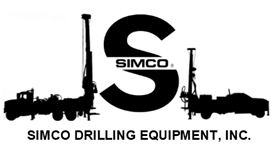
Every drill site comes with its own set of challenges and dangers. No matter how much preparation you and your team do ahead of time, there are always unknowns and the possibility of things going terribly wrong. Your drill rig operators are your best and most valuable asset, so be sure to equip them with the knowledge and the tools to protect themselves out in the field.
The most vital piece of protection? Hard hats.
While most drilling industry employees are aware of the government regulations – and, hopefully, simple common sense – there are a lot of workers who choose not to wear a hard hat on site. The excuses are plentiful: it’s too hot, it’s too cold, it’s bulky and awkward and just uncomfortable. But if workers take the time to really look at all the potential mishaps and the potential debilitating injuries that could result, they’ll realize that a crushed skull is pretty uncomfortable, too.
Hard hats are designed specifically for safety. They are engineered to provide several different protections in one piece of equipment. Every aspect of the hard hat keeps the wearer’s head – and the contents – safe from site accidents. The shape distributes the force of a blow equally across the shell; the hard surface deflects, dents or absorbs the impact of an object striking the hat; the suspension inside the hat acts as a sort of “shock absorber,” to lessen the effects of contact.
But simply purchasing and wearing a hard hat isn’t the only responsibility of your drilling rig team. They also need to know how to inspect and maintain the hard hat for optimal protection.
- Set an inspection schedule to routinely inspect each hard hat for cracks, dents, and scratches.
- Chalking, fading, brittleness and stiffness are also warning signs to watch for on a hard hat as indicators of age and lessened effectiveness. Keep stickers at a minimum so you can inspect the surface fully.
- The inside suspension straps can also show wear through fraying, cuts and reduced pliability.
- If the hat doesn’t fit right and isn’t comfortable, it probably is the wrong size. Do NOT alter the suspension, simply exchange it for the right fit.
- Wearing a hard hat backwards like you might a baseball cap is neither “hip” nor practical. Wearing it in a way other than what it was built for negates the safety aspects of wearing it at all.
- If you need to wear a hard hat outside in cold weather, only wear winter headliners designed by they hard hat manufacturer. Trying to wear a standard stocking cap under a hart hat reduces the shock absorption ability and puts you at risk.
- Don’t drill holes to make it cooler in summer as this compromises the integrity of the shell.
- Never tuck anything between the suspension and the shell of the hard hat because that air space is for your protection.
- Replace any hat that falls from more than 8 feet, has suffered a blow, or has been used in high heat and outdoors for more than two years, or has been used consistently for 5 years.
When a drilling crew shows up wearing the necessary safety equipment, it provides peace of mind to the client. The crew shows the client they are professional, that the company takes care of its employees, and that they follow the safety rules set by OSHA. Enforcing safety requirements also lets your employees know that they are valued and, in turn, develops a sense of loyalty to your company, helping you build a strong drilling team.



